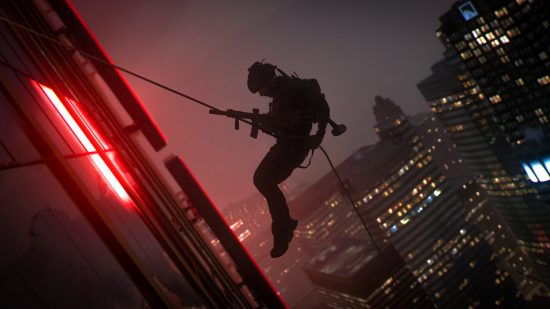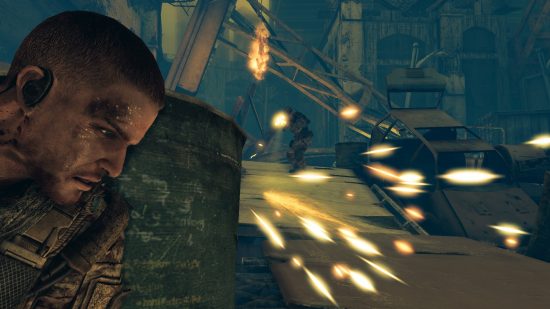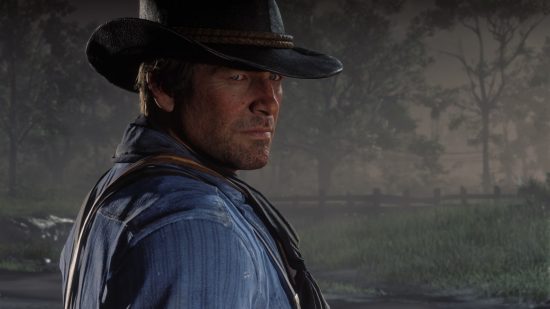Call of Duty, Red Dead Redemption 2, Far Cry, GTA, and many other shooters struggle to tell cohesive stories. That’s not to say these games are bad or don’t have their own varied storytelling qualities: RDR 2 and especially GTA 4 are very well written. But in all of these shooters, the cohesion and power of their drama is almost completely undermined by the same problem, best exemplified by the classic Christmas movie Die Hard.
I’m going to use Red Dead Redemption 2 as the primary example here because it’s a well-written adventure game, the characters are compelling, and it’s considered by many to be surprisingly, almost groundbreaking consistency for an open-world shooter. In short, RDR2 is one of the best examples of storytelling and drama in big-budget video games, and even that, for all the superlatives you could apply, is pretty much nullified by that constant, near-fatal flaw in shooters. modern. games.
Arthur Morgan is a cowboy with a conscience. In particular, as RDR 2 progresses, he becomes increasingly sensitive to the struggles of John, Abigail, and Jack, and is therefore more concerned with the increasing violence of Dutch, Micah, and the rest of the more mercenary members. from the gang . He is, at the near climax of the game, a vulnerable character whose fate still seems to hang in the balance.
Threats of capture and imminent death, as well as the need to improve, motivate him throughout his last personal act. Similarly, the Van der Linde gang itself is portrayed as perpetually unreliable, narrowly evading capture by local sheriffs and Pinkerton detectives and trying desperately to keep a low enough profile so that they can save enough money. to escape civilization.
Just as coal turns to diamond, the story of Arthur Morgan and Red Dead 2 evolves and improves through constant pressure: if Arthur and the gang want to get what they want, and potentially secure a better life, they first have to survive. .
All of that, dramatically, narratively, thematically, is almost negated by the fact that Arthur can literally shoot him at any moment with no consequence. hundreds armed adversaries, be they policemen, rival bandits, or even trained military personnel.
We kill and kill and kill in Red Dead Redemption 2. As reviewers and gamers, we’ve already debated the ethics of portraying violence as satiation, but there’s less discussion about how the giddy body counts in Red Dead Redemption 2, or any of the other games. mentioned in this article effectively rob the shooters of their dramatic potential: how every issue, problem, or obstacle a character can face, emotional or otherwise, becomes that much harder to take seriously when he’s, canonically, capable. to quickly (often in style) take down anyone who could harm them.
Lorsqu’Arthur Morgan réprime à lui seul 40, 50 ou 60 officiers de Saint-Denis, ses conversations ultérieures avec Dutch sur la façon dont le gang devrait faire profil bas et risquer d’être tué par une loi persécutrice deviennent très difficiles à prendre au I laughed. . By association, the story of the deteriorating relationship between Dutch and Arthur, which has Arthur viewing his long-time mentor as increasingly deranged and eager to put the rest of the camp at risk to satisfy his royal ambitions, loses its credibility. . and dramatic weight.
Also, if Arthur can apparently kill anyone who might oppose him in any number, how can anything Dutch really endanger Arthur or his friends, and why should he care? FPS games like Call of Duty, Far Cry and other gun games like GTA. murder each perhaps sacrificing that particular narrative foundation.
That’s not to say that games where you kill with absolute power and with impunity aren’t worth your time. Doom’s story, insofar as its enduring sense of the Doomslayer’s invincibility and the righteousness of his battle against Hell, ratified by every mechanical and design choice, can be called a story, works precisely because of the lethality and longevity it brings. offers both characters. and player – Doom – is fun, incredibly satisfying and rewarding because you can kill and survive anything.

Not all gunslingers fall prey to the same problem, where the protagonist’s unassailable skill with a gun makes him immune to the threat and neutralizes the drama in the process. On the contrary, the dramatic potential and cohesiveness of certain shooters depends on the superior abilities of the characters and is made even more fun, and not only in Doom, but also in Halo, Gears of War and Max Payne.
However, in the case of games where vulnerability, danger and the feeling of being an outsider are essential to the credibility of the plot, where, in order to revel in our hero’s adventure, we must also believe that it is something like against wind and tide. and survival, but only unreliable: I would look to Die Hard, arguably the best Christmas movie of all time, to serve as a model for me.
One of Die Hard’s greatest qualities is the efficiency and clarity with which it sets the stakes. At several pauses, we’re reminded of exactly how many terrorists John McLane is up against: 12 or 13, if you count grumpy hacker Theo. Likewise, the film restores John’s receptiveness and perception of harm at every opportunity.
He has no shoes. He starts the movie with just one gun. Crawling through the vent makes it dirty. Walking on glass makes you bleed. In the climax of the film, when he finally arrives to kill Hans Gruber, who has taken John’s wife Holly hostage, she looks at John, limping, bleeding, shot in the shoulder, and simply comments “Jesus “. He is a hero who is soft, bleeds and can die at any time.
Faced with seemingly insurmountable odds, 12 to 1, her fights, her stories are made all the more compelling because it comes at the expense of her body. Played by Hollywood star Bruce Willis, a man recognizable, if not for his fear, foul language and desperate improvisation throughout the film, then at least for his fragile anatomy, he is as human as an action hero can be. of the. .
In this way, the McLane story becomes one that is more relatable. Just as we have our own human dramas, intimately understood by ourselves, Jean’s ardor is clear and immediately understandable to us as difficult and unfair: alone, he must kill 12 people.
The effect of this perception and empathy of the importance of what John must overcome is enhanced by our recognition of him as a person. Like us, he has limitations, which became a metaphor in Die Hard due to his slow physical degradation. Like us, he has to face unfair and cruel circumstances.
It’s a story we can put behind us, which makes every display of violence and spectacle all the more enjoyable. When John McClain manages to kill someone, it means something to him: he’s 11 now, not 12, and closer to survival. And since John is obviously a person, one of us, this victory and all the emotions and internal dramas that come with it are transferred to us.
Conversely, if we can kill, kill, kill, as is common in shooters, any attempt by the game to humanize or portray our vulnerable protagonist becomes much harder to believe and the integrity of the game as a whole suffers. . .

Arthur Morgan sweats, swears, drinks. He makes terrible mistakes and, like John McClane, turns out to have a human body, susceptible in his case to tuberculosis. To a degree, that works: he’s still one of the most empathetic and recognizable human characters in popular big-budget games. But even despite the fact that he is supposedly in the last days of his life, weakened and maimed by tuberculosis, Arthur is still free to kill dozens of armed opponents.
Another example is Joel from The Last of Us, coming to PC in March, the story of a man tormented in constant fear for his own survival and that of Ellie, a mechanically unstoppable assassin who bleeds tons of fluid. The solution, however, is not always to avoid violence in games or simply moralize it, like in Spec Ops The Line or This War of Mine.
Rather, the violence must be contextualized and meaningful in order to affect the character and the story in any way. This influence and significance can still be joyous and rewarding: I guarantee killing enemies in a video game when you know who they are, what they’ve done, and what it means to kill them will be more fun, even in a simple sense. and primitive. they kill a lot of food.
But the death toll in shooters, at least those that are meant to be dramatic, must go down, or we’ll continue to play as unrecognizable superhumans, whose inner lives, however well-constructed, will seem completely unfamiliar to us.
Source : PC Gamesn

